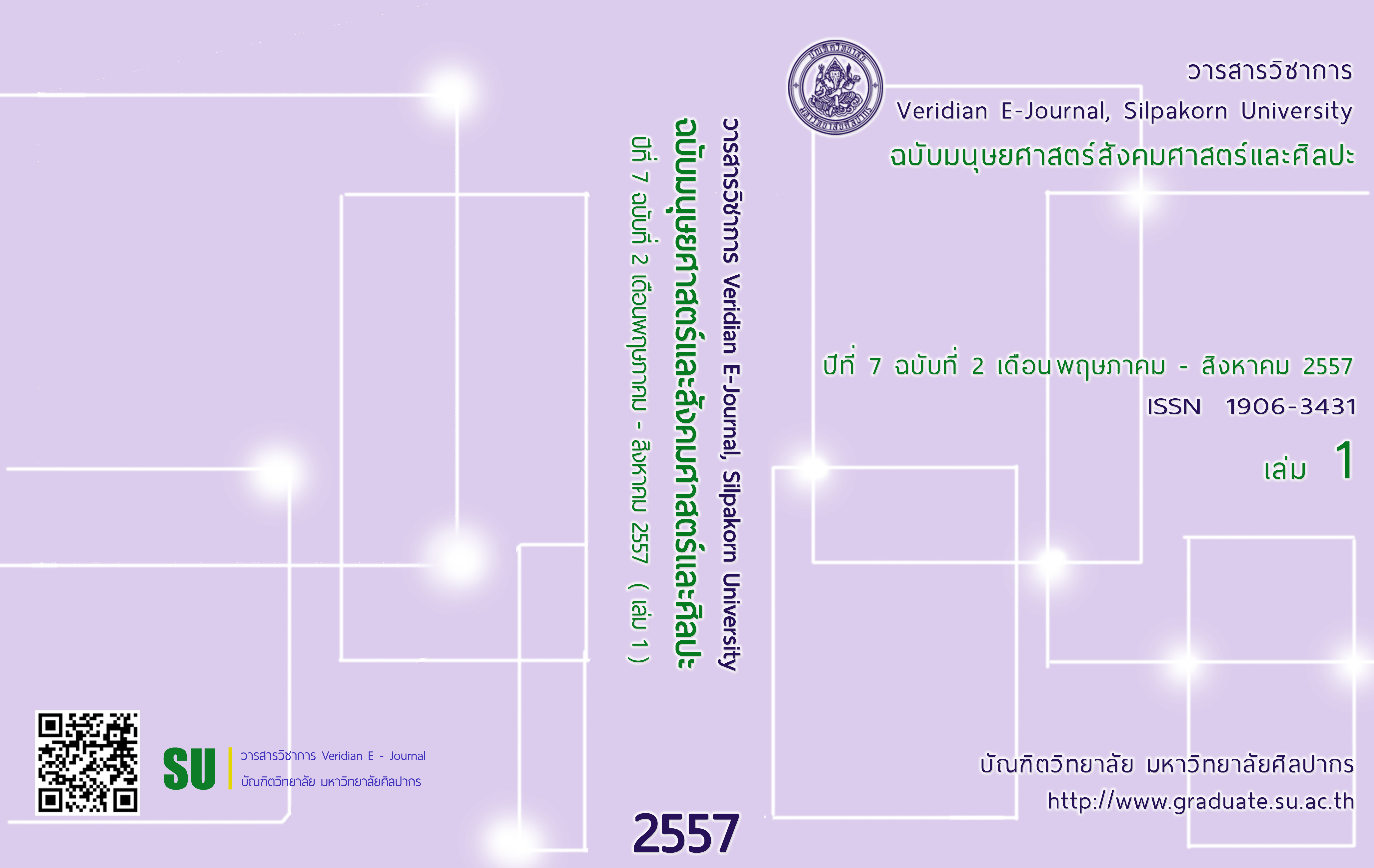ผลของการเรียนแบบผสมผสานโดยใช้กระบวนการแก้ปัญหาที่มีต่อความสามารถในแก้ปัญหาการเขียนโปรแกรมคอมพิวเตอร์ของนักเรียนชั้นมัธยมศึกษาปีที่ 5 โรงเรียนท่าเรือพิทยาคม/Effects of Problem Solving Process and Blended Learning on Computer Programming Problem Solving Ski
Main Article Content
Abstract
บทคัดย่อ การวิจัยครั้งนี้มีวัตถุประสงค์เพื่อ 1) ศึกษาคะแนนความสามารถในการแก้ปัญหาการเขียนโปรแกรมคอมพิวเตอร์ก่อนเรียนและหลังเรียนของนักเรียนที่เรียนด้วยการเรียนแบบผสมผสานโดยใช้กระบวนการแก้ปัญหา 2) ศึกษาผลสัมฤทธิ์ทางการเรียนก่อนเรียนและหลังเรียนของนักเรียนที่เรียนด้วย การเรียนแบบผสมผสานโดยใช้กระบวนการแก้ปัญหา 3) ศึกษาความคิดเห็นของนักเรียนที่มีต่อการจัด การเรียนแบบผสมผสานโดยใช้กระบวนการแก้ปัญหา ประชากรที่ใช้ในการวิจัยคือ นักเรียนชั้นมัธยมศึกษา ปีที่ 5 โรงเรียนท่าเรือพิทยาคม ที่กำลังศึกษาวิชา การเขียนโปรแกรมภาษาซี ในภาคเรียนที่ 2 ปีการศึกษา 2556 จำนวน 25 คน จากการสุ่มแบบเจาะจง ระยะเวลาในการทดลอง 8 สัปดาห์ เครื่องมือที่ใช้ในการวิจัยประกอบด้วย 1) แบบสัมภาษณ์อย่างมีโครงสร้าง 2) แผนการจัดการเรียนรู้แบบผสมผสานโดยใช้กระบวนการแก้ปัญหา 3) กิจกรรมการเรียนแบบผสมผสานโดยใช้กระบวนการแก้ปัญหา4) แบบทดสอบวัดความสามารถในการแก้ปัญหาการเขียนโปรแกรมคอมพิวเตอร์ 5) แบบทดสอบวัดผลสัมฤทธิ์ทางการเรียน วิชา การเขียนโปรแกรมภาษาซี 6) แบบสอบถามความคิดเห็นที่มีต่อการเรียนแบบผสมผสานโดยใช้กระบวนการแก้ปัญหา สถิติที่ใช้ในการวิเคราะห์ข้อมูลได้แก่ ค่าเฉลี่ย ค่าร้อยละ ส่วนเบี่ยงเบนมาตรฐาน และ สถิติทดสอบ ค่าที (t-test แบบ Dependent) ผลการวิจัยพบว่า 1) ผลคะแนนความสามารถในการแก้ปัญหาการเขียนโปรแกรมคอมพิวเตอร์ของนักเรียนชั้นมัธยมศึกษาปีที่ 5 ที่จัดการเรียนแบบผสมผสานโดยใช้กระบวนการแก้ปัญหา หลังเรียนสูงกว่าก่อนเรียน อย่างมีนัยสำคัญทางสถิติที่ระดับ .05 2) ผลสัมฤทธิ์ทางการเรียนของนักเรียนชั้นมัธยมศึกษาปีที่ 5 ที่จัดการเรียนแบบผสมผสานโดยใช้กระบวนการแก้ปัญหา หลังเรียนสูงกว่าก่อนเรียน อย่างมีนัยสำคัญทางสถิติที่ระดับ .05 3) ความคิดเห็นของนักเรียนที่มีต่อการจัดการเรียนแบบผสมผสานโดยใช้กระบวนการแก้ปัญหา พบว่า นักเรียนมีความคิดเห็นโดยรวมทุกด้านอยู่ในระดับ ดี ( = 4.30, = 0.58) Abstract The purposes of this research were 1) Study the students’ score of the abilities in solving problem pretest and posttest learning 2) Study the students’ pretest and posttest learning achievement with blended learning by using problem solving process 3) Study students’ opinion on blended learning by using problem solving process. The population used in this study consisted of 25 students the mathayom 5 students, Tharuapitthayakhom School in second semester of academic year 2013 by purposive sampling. The research instruments were 1) interviewing form 2) lesson plan on blended learning by using problem solving process 3) learning activities by using the process of problem solving 4) a test of the abilities to computer programming problem solving 5) a test of the achievement of c programming subject 6) questionnaire form on students opinion blended learning by using problem solving process. The data analysis were mean, percentage, standard deviation and t- test dependent. The results of the research were as follow: 1) Problem solving ability score of students with blended learning by using problem solving process was higher than pretest at .05 level of significance. 2) Posttest of the learning achievement of blended learning by using problem solving process was higher than pretest at .05 level of significance. 3) The students opinion for blended learning by using problem solving process overall were at a good level ( = 4.30, = 0.58).
Article Details
Section
บทความ : มนุษยศาสตร์ สังคมศาสตร์ และศิลปะ
